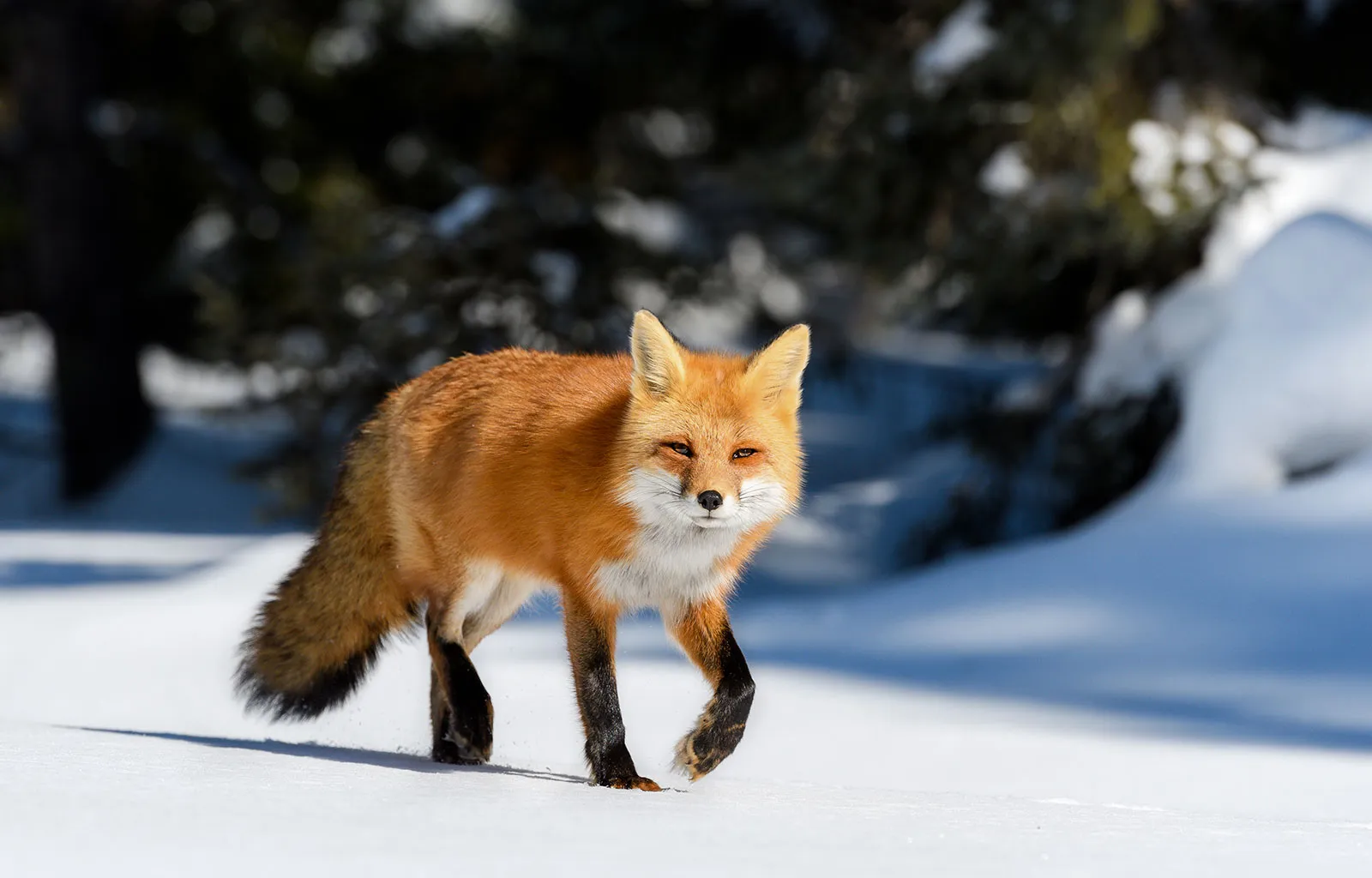The red fox (Vulpes vulpes) is the largest of the true foxes and one of the most widely distributed members of the order Carnivora, being present across the entire Northern Hemisphere including most of North America, Europe and Asia, plus parts of North Africa. It is listed as least concern on the IUCN Red List. Its range has increased alongside human expansion, having been introduced to Australia, where it is considered harmful to native mammals and bird populations. Due to its presence in Australia, it is included on the list of the "world's 100 worst invasive species".
The red fox originated from smaller-sized ancestors from Eurasia during the Middle Villafranchian period, and colonised North America shortly after the Wisconsin glaciation. Among the true foxes, the red fox represents a more progressive form in the direction of carnivory. Apart from its large size, the red fox is distinguished from other fox species by its ability to adapt quickly to new environments. Despite its name, the species often produces individuals with other colourings, including leucistic and melanistic individuals. Forty-five subspecies are currently recognised,[7] which are divided into two categories: the large northern foxes and the small, basal southern grey desert foxes of Asia and North Africa.
Red foxes are usually found in pairs or small groups consisting of families, such as a mated pair and their young, or a male with several females having kinship ties. The young of the mated pair remain with their parents to assist in caring for new kits.[8] The species primarily feeds on small rodents, though it may also target rabbits, squirrels, game birds, reptiles, invertebrates and young ungulates. Fruit and vegetable matter is also eaten sometimes. Although the red fox tends to kill smaller predators, including other fox species, it is vulnerable to attack from larger predators, such as wolves, coyotes, golden jackals, large predatory birds such as golden eagles and Eurasian eagle owls, and medium- and large-sized felids.
The species has a long history of association with humans, having been extensively hunted as a pest and furbearer for many centuries, as well as being represented in human folklore and mythology. Because of its widespread distribution and large population, the red fox is one of the most important furbearing animals harvested for the fur trade. Too small to pose a threat to humans, it has extensively benefited from the presence of human habitation, and has successfully colonised many suburban and urban areas. Domestication of the red fox is also underway in Russia, and has resulted in the domesticated silver fox.
Megathreads and spaces to hang out:
- 📀 Come listen to music and Watch movies with your fellow Hexbears nerd, in Cy.tube
- 🔥 Read and talk about a current topics in the News Megathread
- ⚔ Come talk in the New Weekly PoC thread
- ✨ Talk with fellow Trans comrades in the New Weekly Trans thread
reminders:
- 💚 You nerds can join specific comms to see posts about all sorts of topics
- 💙 Hexbear’s algorithm prioritizes comments over upbears
- 💜 Sorting by new you nerd
- 🌈 If you ever want to make your own megathread, you can reserve a spot here nerd
- 🐶 Join the unofficial Hexbear-adjacent Mastodon instance toots.matapacos.dog
Links To Resources (Aid and Theory):
Aid:
Theory:

Normally the D is "Valley girl" mode, except in the name Mads. In almost every other word where the D marks Stød you've got the gist. Kinda.
Like, okay, I don't know if I can trust you with this. But the difference between the word "Dog" (Hund) and the word "She" (Hun) is this glottal stop/vocal fry. There is however also no way to know when a D marks this or when it's a Th sound or a normal D sound
I like Frankenstekn can only look in fear at what I have created.
Increasing believing that we should have China overhaul every language's writing system and make like a universal pinyin
It is kinda neat that pinyin marks the suprasegmental phonemes of Mandarin in a way that's relatively easy to understand (Tone markers), but pinyin is also very clearly built around Chinese (And it wouldn't make sense for it not to be).
The problem with universality here is that you'd need not only to include all the different normal phonetic notations, but also all the various modifications like tone, stiff voice, creaky voice, and so on, and have people remember it, only to end up with a system of notation that is highly non phonetic for most users (Unless we just get rid of orthography/spelling) and has like 20 letters or symbols per language that aren't used (It would of course be differrent parts of the new system you would never use depending on your language). So we'd be back to where we started in some ways, ahead in others, and also taking a step back.
We already have that but it’s poorly suited to your average text, plus the spelling changes based on dialect. English writing may suck ass, but at least it allows people from Texas and Scotland to communicate
But that was made by the French and British who can't even spell their own languages sensibly
well true, and IPA has some eurocentric idiosyncrasies, but unlike french or english, it’s actually phonetic, one letter always has the same sound, there are no spelling rules based on context. the only thing is you can choose to specify nearly useless degrees of accuracy, but the base accuracy is still way higher than any “real” spelling.